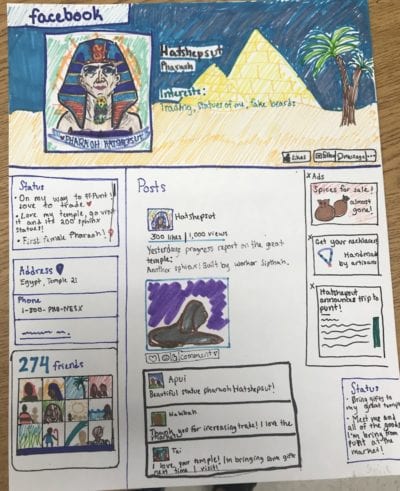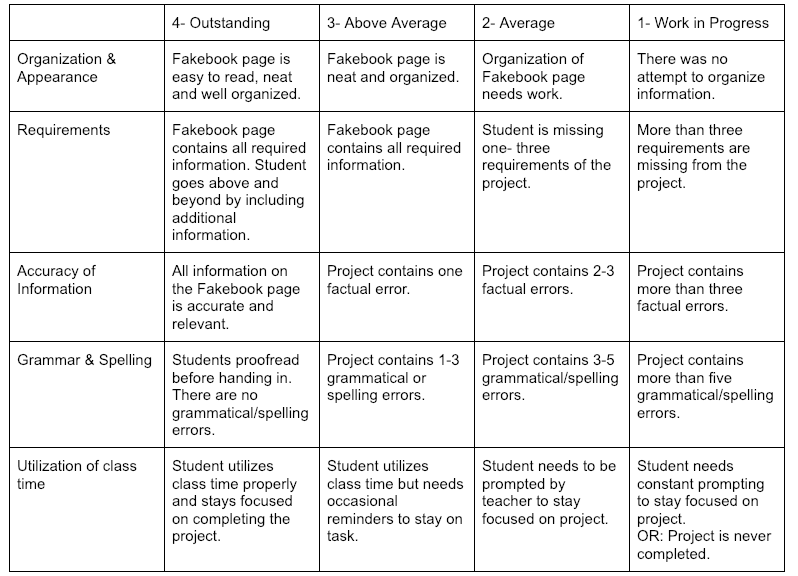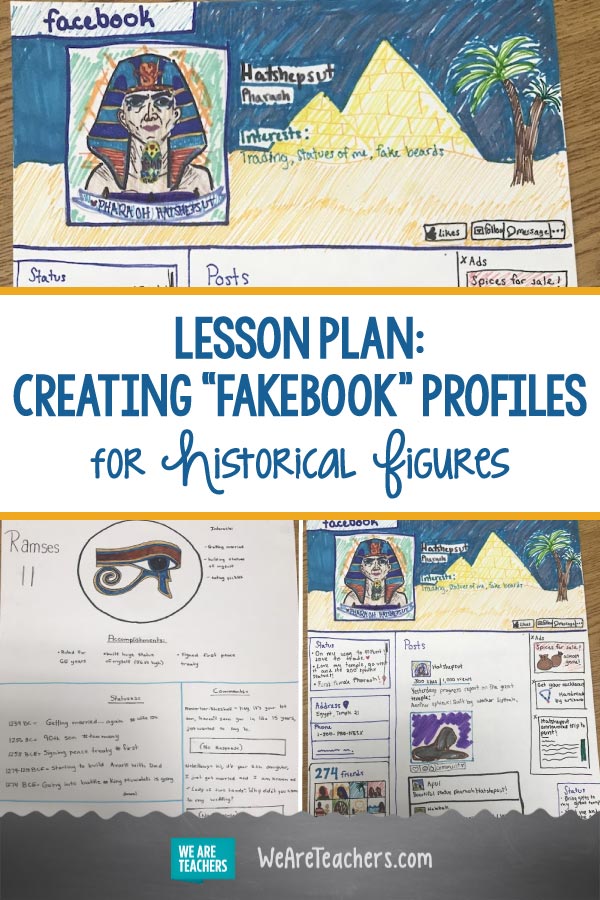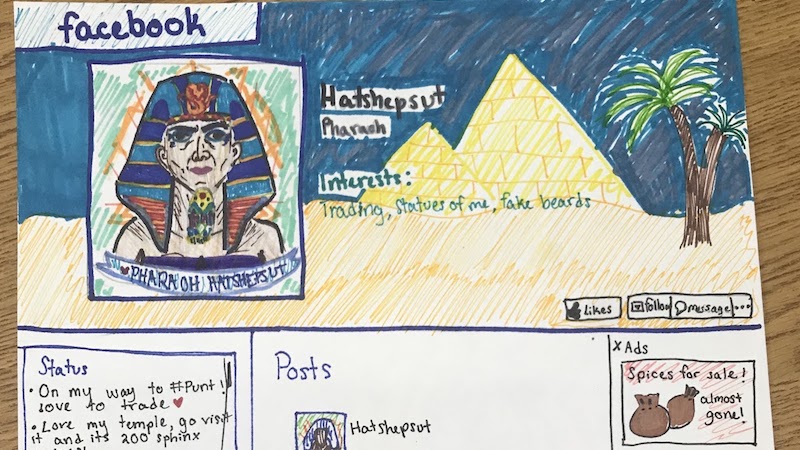I love to engage my middle school students by incorporating one of their favorite things: social media. And one of their all-time favorites is the Fakebook project.
Here’s how it works:

Students use their notes to create a Facebook-style social media profile for a historical figure. What I love most about this assignment is that it allows students to express their humor and creativity. Since nearly every chapter contains numerous notable figures, this project is versatile and can be used for virtually any chapter or subject area.
[contextly_auto_sidebar]
A Fakebook lesson plan, step by step

The directions, rubric, and examples here accompany my sixth grade world history unit on ancient Egypt. While I expect their information to be relevant and accurate, I give them some creative license by allowing them to use modern phrases and hashtags.
Directions
Here’s a list of what I ask my students to include in their Fakebook profiles:
- A profile picture
- Five Facebook-style statuses. For example: Hatshepsut is on her way to Punt for a trade expedition!
- Three interests or likes. For example: Senusret likes mines filled with gold and amethyst
- Three comments from fictitious people ruled by that pharaoh. For example: Tut commented to Ramses II: Thanks for keeping us safe from enemies! You are a great military leader!
Materials

I encourage my students to create their Fakebook page using a small piece of poster board, construction paper, Google Docs (format: two columns), or Google Drawings to keep it simple.
My more tech-savvy kids sometimes use other programs, if they are familiar with them. I am aware that there are a few templates available for online Fakebook pages. However, in the past my students have had trouble with the save feature, losing all of their hard work before it was handed in or complete. The templates I’ve seen also have tons of ads and do not look aesthetically pleasing. I’ve also experimented with paper templates, but they can be quite restrictive as they have limited space. They are great to use as a guideline, but I personally only use them as a reference for the set up of a Facebook profile for students who aren’t familiar with the platform.
Rubric
I include Student goes above and beyond by including additional information under the requirements section of the rubric because this assignment leaves a lot of room for creativity. My goal is for students to put their own unique spin on the project, therefore I like to make the rubric flexible.

This project has always been a huge hit in my classroom. The students entertain themselves and one another endlessly with their ideas and get a real kick out of modernizing different historical figures. I find it works especially well with the Founding Fathers of the United States and various world leaders. The best thing about this assignment is that it’s FUN! The students enjoy themselves while creating high-quality work by applying the knowledge that they have of the class material. It’s a great form of assessment for teachers and an engaging, creative activity for our kids.
We’d love to hear—how do you incorporate social media into your lessons? Come and share in our WeAreTeachers HELPLINE group on Facebook.
Plus, How to Use Social Media as a Teacher.


